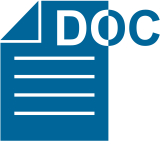Pemodelan Inversi 3D Gaya Berat dan Magnet Pada Sistem Panas Bumi Daerah Jaboi, Pulau Weh, Provinsi Aceh
Abstract
Pemodelan geofisika bersifat tidak unik sehingga dapat menghasilkan beberapa model. Pemodelan gaya berat dan magnet yang dilakukan di daerah panas bumi Jaboi, Provinsi Aceh pada tahun 2005 oleh Direktorat Inventarisasi Sumber Daya Mineral masih menggunakan foward modelling dan belum dapat menggambarkan kondisi 3D sistem panas bumi di daerah ini. Pemodelan inversi 3D adalah salah satu teknik pemodelan yang parameter modelnya diperoleh langsung dari data pengamatan. Teknik ini diaplikasikan pada data gaya berat dan magnet di daerah Jaboi untuk mengidentifikasi sistem dan area keprospekan panas bumi. Hasil pemodelan menunjukkan bahwa sistem panas bumi terkonsentrasi di bawah struktur Graben Jaboi yang berada di antara Gunung Leumo dan Semereuguh dengan Kedalaman puncak reservoir sekitar 750 meter dari permukaan.Downloads
References
Anonim, 2005, Penyelidikan Terpadu Geologi, Geokimia dan Geofisika Daerah Panas Bumi Jaboi, Pulau Weh, NAD, Direktorat Inventarisasi Sumber Daya Mineral (DIM), Bandung.
Anonim, 2006, Pemboran Landaian Suhu Daerah Panas Bumi Jaboi, Pulau Weh, NAD, Pusat Sumber Daya Geologi, Bandung.
Kadir, W.G.A, 2000, Eksplorasi Gaya Berat dan Magnetik, Jurusan Teknik Geofisika, Fakultas Ilmu Kebumian dan Teknologi Mineral, Institut Teknologi Bandung.
Kauffman A, and G.V. Keller, 1981, The Mafnetotelluric Sounding Method, Elsevier, Amsterdam.
Grandis, H, 2009, Pengantar Pemodelan Inversi Geofisika, Institut Teknologi Bandung.
Suhanto, E, dan Kasbani, 2007, Delineation of Prospect Area and Reservoir Structures of Jaboi Geothermal Fields as Mapped from Resistivity Data, proceeding HAGI-IAGI-IATMI joint convention Bali.
Copyright (c) 2018 Buletin Sumber Daya Geologi

This work is licensed under a Creative Commons Attribution-NonCommercial-ShareAlike 4.0 International License.
Authors whose manuscripts are published agree to the following terms:
The publication rights of all journal manuscript materials published on the Buletin Sumber Daya Geologi website are held by the editorial board with the knowledge of the author (moral rights remain with the manuscript’s author).
The formal legal provisions for access to digital articles in this electronic journal are subject to the terms of the Creative Commons Attribution-ShareAlike (CC BY-SA) license. This means that Buletin Sumber Daya Geologi has the right to store, convert media/formats, manage in the form of a database, maintain, and publish the article without requesting permission from the author, as long as the author’s name is cited as the copyright holder.
Manuscripts published in both print and electronic formats are open access for educational, research, investigative, and library purposes. Beyond these purposes, the editorial board is not responsible for any violations of copyright law.















